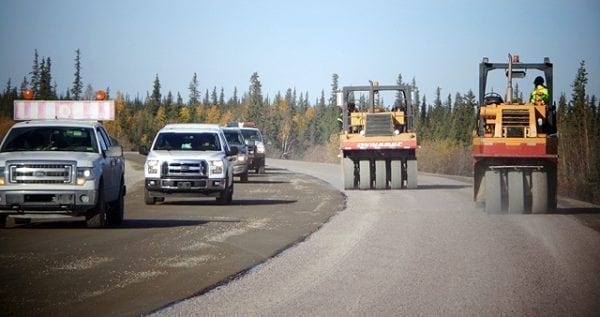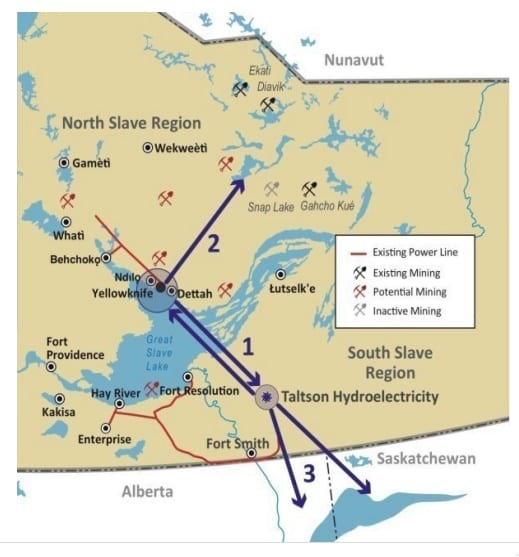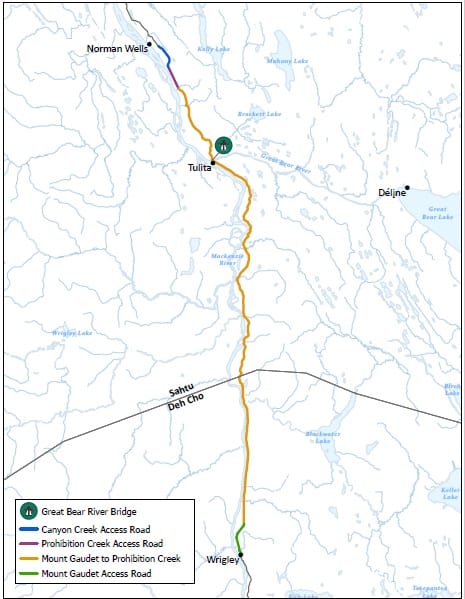The GNWT revealed $451.2 million in infrastructure spending plans for 2021-2022 on Thursday.
Significant amounts of federal funding will support many projects.

images courtesy of the GNWT/Department of Infrastructure
Large capital projects – those with budgets of at least $600,000 – are slated to receive $424.1 million in the 2021-2022 budget.
Small capital schemes, with budgets of $50,000 to $600,000, are allocated $20.6 million in the plan.
The remaining $6.5 million will go to information management and information technology projects.
Spending is spread over various departments, but Infrastructure (INF) will receive more than half the total budget, or $292.8 million.
Inuvik Airport runway
Among the listed projects, work on the Mike Zubko Airport runway could receive up to $177 million. The 914-metre runway extension alone is budgeted to get up to $150 million, depending on federal funding.
"Extending and modernizing the runway will ensure the airport can meet changing operational demands and continue to provide for safe air operations," INF stated.
The extension will include LED lighting along the full length of the runway, reconstruction of navigational aids and infrastructure upgrades. Currently in the design phase, construction on the runway extension is anticipated to be completed by fall 2025.
Another $22 million is budgeted for widening runway safety areas and taxiway embankments, site drainage and paving and repairs in an effort to minimize damage from climate change. Now in the design phase, its anticipated completion is fall 2022.
Fuel storage in Arctic communities
Work to increase bulk fuel storage capacities in Paulatuk, Ulukhaktok, Sachs Harbour and Tuktoyaktuk has been allocated $29 million. Its anticipated completion date is in 2023 or 2024.
Hydro expansion
Taltson hydro expansion is slated to get $18 million from the Ministry of Crown-Indigenous Relations and Northern Affairs Canada between 2019-2023.
The next step of the expansion will be a request for proposal for a technical advisor and the completion of a business case in the first quarter of 2021.
Technical investigations and tender document preparations will take place in 2021-2023, with environmental and regulatory approvals following in 2022-2024 or 2025.
In its first phase, 60MW of generation capacity is expected to be achieved and it will be connected to two NWT hydro systems.

In the second phase, the project will be able to provide clean energy to the Slave Geological Province and resource sector.
In the third, it will be connected to the NWT electrical grid to the rest of Canada.
Construction of the expansion is estimated to take four years and cost approximately $1.2 billion.
Mackenzie Valley Highway
The proposed two-lane, 321 km gravel highway will run from Wrigley to Norman Wells.
Parts of the scheme will be funded with $140 million under the National Trade
Corridors Fund, such as construction of Great Bear River Bridge, the Mount Gaudet Access Road and environmental assessment and planning.

The Investing in Canada Infrastructure Plan will contribute $20 million for construction of the Prohibition Creek Access Road.
Regulatory approvals for the Great Bear River Bridge and Mount Gaudet Access Road are expected in 2021-2022, with construction coming in 2022-2025 and in 2021-2023, respectively.
The Prohibition Creek Access Road is expected to be built in 2021-2023.
The developers assessment report for the highway is expected to be ready in 2022.
Slave Geological Province Corridor
The 413-km road, energy and communications corridor project into the Slave Geological Province north of Yellowknife will receive $40 million under the National Trade Corridors Fund.
That fund will support environmental and regulatory reviews leading to construction permits for the Lockhart All-Season Road (LASR) and for planning for the Lockhart Lake to Nunavut border route.
Engagement and consultation with Indigenous governments and organizations is ongoing, while a project description report for the LASR is expected in 2021. The search for construction funding opportunities for LASR are also ongoing.
Regulatory approvals for LASR are anticipated to be ready in the period of 2022-2025.
Northwest Territories Housing Corporation (NWTHC) investments
The proposed Housing Corp. capital plan for 2021-2022 comes to $10.6 million.
That breaks down into $5 million for 104 major retrofits to existing housing stock, $5.5 million for nine market housing units and $125,000 for vehicles.
Other planned investments include $7.8 million to support housing partnership projects like the Community Housing Support Initiative and National Co-Investment Fund, $7.0 million for homeownership repair programs, $5.6 million for fuel tank replacements and minor repairs of owned assets and $1 million for demolitions and hazard assessments.
In normal years, INF presents its planned capital spending for the upcoming fiscal year through an in-person Industry Day event. But due to the Covid-19 pandemic the presentation was posted online this year.